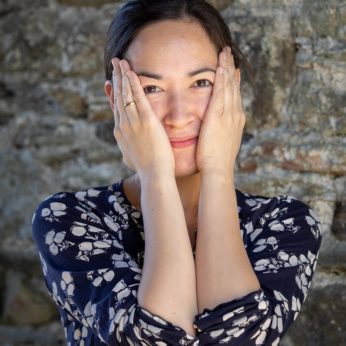Composer: Ludwig van Beethoven (b. 1770 - d. 1827)
Performance date: 30/06/2019
Venue: Bantry Library
Composition Year: 1770 - 1827
Duration: 00:28:58
Recording Engineer: Ciaran Cullen, RTÉ
Instrumentation: vn, vc, pf
Instrumentation Category:Trio
Artists:
Barry Douglas -
[piano]
Johannes Moser -
[cello]
Viviane Hagner -
[violin]

Ludwig van Beethoven [1770-1827]
Piano Trio No 4 in D major, op.70/1 ‘Ghost Trio’
• Allegro vivace e con brio
• Largo assai ed espressivo
• Presto
This superb trio dates from the autumn of 1808 and was composed immediately after the idyllic Pastoral Symphony. He was staying at this time in the house of Countess Marie Erdödy, to whom he dedicated both the Opus 70 Trios. He performed both works there before an invited audience that December soon after his spectacular benefit concert. This had lasted over four hours with a programme consisting of the Fifth and Sixth Symphonies, the Fourth Piano Concerto, the Gloria and Sanctus from the C major Mass, the concert aria Ah! Perfido and the Choral Fantasia. This latter was specially written for the occasion employing all the forces used elsewhere in the concert, piano, orchestra, solo voices and choir.
The slightly forbidding nickname of this Trio does not prepare us for the exuberant music making of the first movement, exuberance in keeping with his extraordinary achievements that year. The two main ideas are announced immediately, an assertive outburst in bare octaves followed by a short honey-sweet phrase that is passed around the three instruments. These motifs are expanded and worked upon to make up the exposition, full of the high spirits of the opening interwoven with the seductive second theme. After the repeat the harmonic adventures of the development are mostly concerned with the exciting possibilities offered by the first idea – it could hardly be called a theme – before the recapitulation returns to work over the material again. The coda is a wonderfully extended version of the second subject, abruptly concluded by its concise companion.
The work gets its nickname from the atmospheric shuddering that opens the Largo, later followed by dramatic harmonies that fully justify the title. It turns out that the opening phrase was among the sketches Beethoven made for the Witches’ scene in a projected opera on Shakespeare’s Macbeth so the work’s title is entirely appropriate. The aura of mystery is created by dark tremolos, threatening trills and sudden outbursts of thunder; a mood that is sustained throughout the movement. Something of this uncertainty is carried into the finale, which in spite of the lively tempo is replete with strange hesitations and even stranger modulations. Not even Beethoven could escape untouched by the Weird Sisters’ incantations.
Francis Humphrys
Copyright © 2024 West Cork Music. All rights reserved.
Designed and developed by Matrix Internet